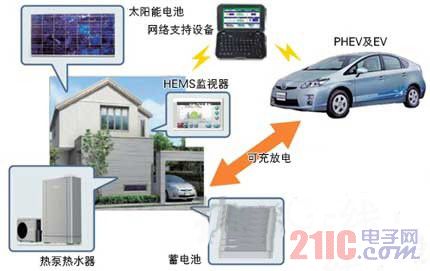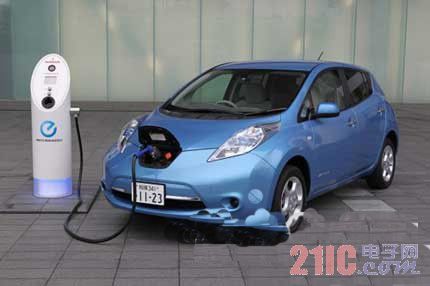Cars have always been moving in the direction of comfortable and convenient transportation. However, in the Great East Japan Earthquake, the use cases of automobiles as emergency power generation devices and power storage devices have emerged in an endless stream. Can a car be a new "power source" and become part of the future social infrastructure? This serial will be divided into three times to think about the energy source of the car. (first time see here) This article refers to the address: http:// After the popularization of hybrid electric vehicles (HEVs), plug-in hybrid vehicles (PHEVs) and electric vehicles (EVs) equipped with large-capacity drive batteries, can these vehicles be fully utilized as huge power storage devices? The industry has proposed the concept of "V2H (Vehicle to Home)" and "V2G (Vehicle to Grid)" to exchange electric vehicles and houses, or to connect electric vehicles to the power grid. The discussion is becoming more and more active. Speaking of this, this was originally the topic of rapid heating in the United States when building a new generation of power grids, the "smart grid." When PHEVs and EVs become popular, it is very likely that users will start charging at night after returning home. From the perspective of the United States, most of its power grids tend to age. In order to meet the needs of users charging at the same time, it is necessary to take measures such as adding transformers to the utility poles and so on. As a way to prevent cost increases, power companies began to study through management and control to prevent users from charging the vehicle at the same time, thus avoiding excessive load on the grid. However, at the same time as the rise of the smart grid, it is envisaged that, in order to manage the charging, it may be necessary to stabilize the power of the renewable energy such as wind power and solar energy, when the power grid is insufficient, or when the power generation amount is large. Make full use of the battery of the vehicle. Japanese automakers are positive This concept is also emerging in Europe and China, where it plans to popularize electric vehicles, and has formed a global discussion. But unfortunately, in Japan before the major earthquake, the power company has always insisted that "the Japanese power grid is of high quality. Therefore, there is no need to use electric vehicles to supply power." Moreover, Japanese automakers also thought that it was easy to cause deterioration of the battery by using the vehicle battery in addition to the driving use, and there was a big problem such as "Who is to guarantee the quality of the battery", so there was no active participation. However, with the rise of this concept in Europe, the United States and China, the concept of Japanese automakers has changed in the past year or two, and attitudes have become increasingly positive. The reason is that automakers recognize that automakers should take ownership of the issue of powering through vehicles. Toyota and Nissan will launch an empirical test in the “New Generation Energy and Social System Evidence Area†project implemented by the Ministry of Economy, Trade and Industry of Japan. Toyota and Nissan are launching empirical tests in Toyota City, Aichi Prefecture and Yokohama City, Kanagawa Prefecture. Toyota plans to sell 70 households with batteries to ordinary consumers, and rent PHEVs and EVs with rechargeable batteries to each household to collect data for verification. Toyota's experiment is characterized by the combination of "car and house" as the smallest unit, first aiming at building a system that can achieve V2H. Moreover, Toyota has strengthened the strength of the residential sector in order to strengthen the linkage between the car and the home. In October 2010, Toyota merged its residential division into Toyota Housing, and Toyota's 9 companies, including Denso, Aisin Seiki and Toyota Automatic Loom, also implemented new funding for Toyota Residence. Toyota's goal is to implement integrated control between electric vehicles with rechargeable batteries and residential homes with batteries. This picture is taken from the special issue of "Nikkei Electronics", November 1st, 2010. Make full use of EV in units of “groups†In December 2010, Nissan quickly launched the mass production EV "LEAF" (Chinese name: Listening Wind) and launched a verification activity using EV. Nissan intends to not only realize the linkage between the car and the house, but also to control the EV in units of “groupsâ€. "In the real-life car, 70% of the cars are in the parking state" (Nissan), so by exchanging power with the EV in the parking state, it is not only a house, but also contributes to power stabilization in office buildings and areas. In addition, Nissan believes that the battery that can be discarded for EV can be reused. In September 2010, it established a joint venture company "4R ENERGY" with Sumitomo Corporation. Although Toyota and Nissan are pushing their own initiatives, Japanese automakers share a common understanding. This is not to exchange large power through a car. Nissan "LEAF". The battery is equipped to provide 24kWh power to the home for two days. Reduce household electricity consumption through EV When there is insufficient power in the summer, it is best for families, offices and businesses to cut their peak electricity consumption by 15%. Think about it here through the family. If the household's hourly electricity consumption is estimated to be 2kWh at the peak of electricity consumption, 15% of it is 300Wh. If you want to reduce this amount of electricity during the 6 hours of electricity use, you can supply 1.8kWh of electricity from your car. In the case of an EV equipped with a 24 kWh battery like the LEAF, only about 7.5% of the battery capacity is used. This will solve the problem. The PHEV is only equipped with a battery of about 5 kWh at most. If you want to reduce the above amount of electricity within 6 hours, you must supply 36% of the battery capacity. Therefore, it is difficult to do it only by the battery. However, the PHEV has an engine and a large generator (motor). Therefore, the insufficient part can also be compensated by engine power generation. Grid Scale Energy Storage,Grid Connected Pv Systems,Stand Alone Power Systems,Opzv Battery EMoreShare International Trade (Suzhou) Co., Ltd , https://www.emoresharesystem.com
The reason is that if the large electric power is repeatedly stored and output by a specific car, not only the battery is accelerated, but also the traveling distance of the EV cannot be ensured when the user heavily uses the vehicle. Therefore, Toyota considers a small amount of power supply between the home and the vehicle; Nissan believes that even if the power of each vehicle is small, it can be used as an EV group to fuse larger power. 
It can be seen that connecting the battery of EV and PHEV to the home is a very valuable measure. The Ministry of Economy, Trade and Industry and the automotive industry held the "Automobile Strategy Research Association" on May 19, 2011, and began to consider how to reduce the amount of electricity used by making full use of batteries equipped with EVs during the summer peak hours.